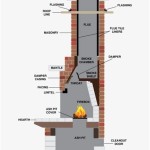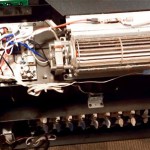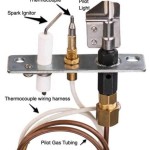Wood Burning Fireplace Inserts: A Comprehensive Guide
Wood burning fireplace inserts represent a significant upgrade for homeowners seeking improved heating efficiency and reduced emissions compared to traditional open fireplaces. These self-contained units are designed to fit directly into existing masonry fireplaces, transforming them into powerful and controllable heat sources. Understanding the features, benefits, and considerations associated with wood burning fireplace inserts is crucial for anyone considering this viable heating alternative.
An open masonry fireplace, while aesthetically pleasing, often suffers from significant heat loss. The majority of the heat generated escapes up the chimney, creating a negative draft that pulls warm air from the rest of the house, negating the benefits of the fire. Wood burning fireplace inserts address this inefficiency by creating a sealed combustion chamber and utilizing a controlled air intake system. This design allows for more complete combustion, resulting in higher heat output and lower emissions.
The efficiency of a wood burning fireplace insert is typically measured by its heating efficiency percentage. Modern inserts often boast efficiencies exceeding 70%, a stark contrast to the single-digit efficiency of some open fireplaces. This improved efficiency translates directly into lower fuel consumption and reduced heating costs.
Key Point 1: Enhanced Heating Efficiency and Performance
The primary advantage of a wood burning fireplace insert is its ability to significantly improve the heating efficiency of an existing fireplace. Open fireplaces are notorious for drawing warm air out of the house and losing most of the heat produced up the chimney. This is due to the uncontrolled air flow and incomplete combustion inherent in their design. Inserts, on the other hand, are engineered to maximize heat transfer and minimize heat loss.
Inserts feature a closed combustion chamber that controls the air intake, allowing for more complete and efficient burning of the wood. This controlled combustion process extracts more heat from the wood, reducing the amount of unburned fuel that escapes as smoke. The heated air is then circulated back into the room through a convection system, often using a fan to distribute the warmth evenly throughout the space. The firebox is typically constructed from cast iron or steel, materials known for their heat retention properties. Some models even include secondary combustion systems that burn off gases released during the initial combustion, further improving efficiency and reducing emissions.
The increased efficiency translates to a more comfortable and consistently heated home. Instead of localized warmth concentrated around the fireplace, the insert provides a more even distribution of heat, reducing drafts and cold spots. This makes the insert a viable heating option for supplementing existing heating systems or even serving as the primary heat source for smaller homes or specific zones within a larger house.
The performance of a wood burning fireplace insert is also measured in British Thermal Units (BTUs). BTU output indicates the amount of heat the insert can generate per hour. Selecting an insert with the appropriate BTU rating for the space being heated is essential for optimal performance. Factors such as the size of the room, insulation levels, and climate should be considered when determining the required BTU output.
Key Point 2: Reduced Emissions and Environmental Impact
Modern wood burning fireplace inserts are designed to minimize emissions and reduce their environmental impact. Older fireplaces and inefficient wood stoves contribute significantly to air pollution, releasing particulate matter and other harmful pollutants into the atmosphere. The Environmental Protection Agency (EPA) has established emission standards for wood burning appliances, and certified inserts must meet these strict requirements.
EPA-certified inserts utilize advanced combustion technologies to reduce emissions. These technologies often involve secondary combustion systems that burn off the gases and particulate matter produced during the initial combustion. This process significantly reduces the amount of smoke and harmful pollutants released into the air. Catalytic combustors and non-catalytic combustion systems are common approaches used to achieve these lower emission levels.
Catalytic combustors use a coated ceramic honeycomb to facilitate the combustion of gases at lower temperatures. The catalyst allows these gases to burn more completely, resulting in reduced emissions. Non-catalytic systems rely on carefully designed air intake systems and firebox designs to promote complete combustion without the use of a catalyst. These systems typically involve strategically placed air tubes or baffles that introduce oxygen into the combustion chamber to burn off gases and particulate matter.
By operating an EPA-certified wood burning fireplace insert, homeowners can significantly reduce their contribution to air pollution and improve the air quality in their homes and communities. This is a crucial consideration for individuals concerned about environmental sustainability and the health impacts of wood burning.
Furthermore, using sustainably harvested wood as fuel can further minimize the environmental impact of wood burning. Sourcing wood from responsibly managed forests ensures that the resource is renewable and that the harvesting practices are environmentally sound.
Key Point 3: Aesthetic Appeal and Safety Features
Beyond their efficiency and environmental benefits, wood burning fireplace inserts offer a range of aesthetic options and safety features that enhance their appeal. Inserts are available in a variety of styles, finishes, and sizes to complement different décor preferences. From traditional cast iron designs to contemporary steel models, there is an insert to suit virtually any aesthetic.
Many inserts feature large glass viewing windows that allow homeowners to enjoy the ambiance of a real wood fire while benefiting from the efficiency and safety of a closed combustion system. These windows are typically made of high-temperature ceramic glass that can withstand the intense heat of the fire. Air wash systems are often incorporated into the design to keep the glass clean and clear, providing an unobstructed view of the flames.
Safety is a paramount concern when operating any wood burning appliance. Inserts are designed with several safety features to prevent accidents and ensure safe operation. These features may include door latches that securely seal the combustion chamber, preventing smoke and embers from escaping. Blower fans can also help to cool the insert's exterior surfaces, reducing the risk of burns.
Proper installation is crucial for ensuring the safe and efficient operation of a wood burning fireplace insert. It is recommended to have the insert installed by a qualified professional who can ensure that it is properly connected to the chimney and that all safety clearances are met. Regular maintenance, including chimney cleaning and inspection, is also essential for preventing chimney fires and maintaining optimal performance.
Some inserts also incorporate advanced control features such as thermostatic controls and programmable timers. These features allow homeowners to precisely regulate the heat output and set schedules for automatic operation, further enhancing convenience and efficiency.
The selection of a suitable wood burning fireplace insert involves a careful consideration of several factors. The size and layout of the room to be heated, the existing fireplace opening dimensions, the desired aesthetic style, and the budget are all important considerations. Consulting with a knowledgeable dealer or installer can help homeowners make an informed decision and select the insert that best meets their needs and preferences.
The installation process typically involves preparing the existing fireplace opening, ensuring that the chimney is clean and in good condition, and connecting the insert to the chimney using appropriate venting materials. The insert is then sealed to the fireplace opening to prevent air leaks and ensure optimal performance. A professional installation will also include a thorough inspection and testing of the insert to ensure that it is operating safely and efficiently.
Ongoing maintenance is essential for prolonging the life of a wood burning fireplace insert and ensuring its continued safe and efficient operation. Regular cleaning of the firebox and chimney is necessary to remove creosote buildup, which can pose a fire hazard. Inspecting the chimney and venting system for cracks or damage is also important. Following the manufacturer's recommendations for maintenance and cleaning will help keep the insert in good working order for many years.
Choosing the right type of wood to burn is also crucial for maximizing efficiency and minimizing emissions. Seasoned hardwood, such as oak, maple, and birch, burns hotter and cleaner than softwood. Softwood, such as pine and fir, contains more resin and moisture, which can lead to increased creosote buildup and higher emissions. Seasoning wood for at least six months allows it to dry out, resulting in more efficient combustion and reduced smoke.
The cost of a wood burning fireplace insert can vary depending on the size, features, and brand. However, the long-term savings in heating costs and the environmental benefits can often offset the initial investment. Government incentives and rebates may also be available to help reduce the cost of purchasing and installing a certified wood burning fireplace insert. Researching available incentives and taking advantage of these opportunities can make the upgrade even more affordable.
In conclusion, wood burning fireplace inserts offer a practical and efficient solution for homeowners looking to improve the heating performance of their existing fireplaces. By understanding the key features, benefits, and considerations associated with these appliances, individuals can make an informed decision and select the insert that best meets their needs and contributes to a more comfortable and sustainable home.
Napoleon Epi3 Wood Fireplace Insert Inserts By
Ventis Hei240 Wood Burning Insert
T25i Timberwolf Wood Fireplace Insert Hearth Stove Patio
Wood Burning Fireplace Inserts 1 Stove Insert Dealer
Osburn 3500 Wood Burning Fireplace Insert 31 Ob03510 Hvacdirect Com
Osburn 2700 Wood Burning Fireplace Insert 32 Ob02700 Hvacdirect Com
Ventis Hei240 Wood Fireplace Insert Mace Energy Supply
Lopi Premium Wood Fireplace Inserts Custom Hearth Fireplaces And Stoves
Osburn Matrix Wood Burning Insert Fireplace Inserts
Wood Burning Fireplace Inserts Insert Installation








